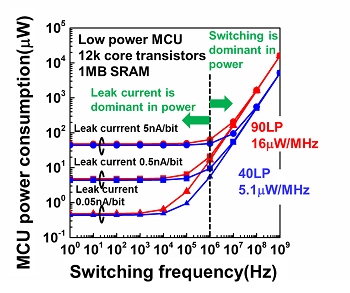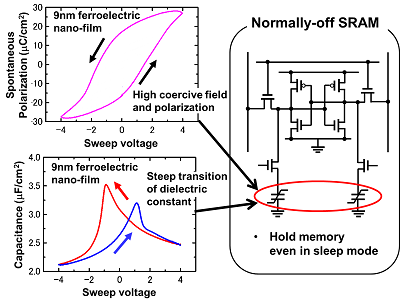

High-end servers are supporting IT infrastructures and smart phones make our life much more comfortable. The core of these electronic systems and devices is made by highly functional integrated system and circuit. This integrated circuit consists of tremendous amount of silicon transistors on a silicon wafer.
Current transistor size is about 20nm. Billions of transistors are fabricated on 300mm silicon wafer by exploiting advanced
process technology.
Until recently, it was important to pursue high performance in a circuit by minituarizing the transistors, however, Internet-of-things (IoT) application requires rather ultralow power circuit, for example 1uW with energy harvester. In addition, Artificial Intelligence (AI) requires
much more efficient computing architecture replacing
conventional von-Neumann architecture by new hardware implementation. These applications are difficult to realize
just by using conventional integrated circuit. Therefore, new innovative device technology should be explored.
We are exploring new electron devices to
make break-through toward next generation computing such as
Internet-of-Things (IoT) and Artificial Intelligence (AI).
Our approach is to integrate emerging nanotechnology with new materials
into silicon LSI system.

To realize ultralow power circuit, the most effective way is to lower the supply voltage to the silicon transistors. However, transistor speed is at the cost when just reducing supply voltage. In order to solve this trade-off, the transistor has to turn on at lower input voltage. The slope of the transistor's drive current is physically limited to 60mV/dec by thermal statistical mechanics.
There is a potential solution to overcome this physical limit:
a negative capacitance transistor. Negative Capacitance transistor (NCFET) has ferroelectric thin film as a gate insulator and its negative capacitance effectively amplifies transistor's channle potential and enables steep turn-on.
We have designed the NCFET and demonstrated breaking this
physical limit. NCFET can operate at ultralow supply voltage such as 0.2V with higher energy efficiency than conventional transisitor.

Semiconductor memory is the other most important device as well as transistor. Any integrated circuit should have memory device. Memory devices are in standby mode in most of the time. However, for IoT application, because of low activity of IoT device, the power consumption is mainly dominated by memory standby leakage power, which has to be suppressed. We are doing research on ultralow power memory, especially using novel ferroelectric thin film which is compatible to current process technology. We hav developed functional ferroelectric less than 10nm thick film. this ferroelectric thin film is utilized for one transistor non-volatile memory and non-volatile SRAM application.
Deep learning is a hot topic in both academic and industry. Currently such algorithms are implemented by software using conventional hardware system. This approach is easy to realize however cosumes tremendous amount of power. On the other hand, there is another approach to implement computer by mimicing human brain, so called neuromorphic computing. Human brain is very energy efficient, as you know. Human brain has uniqure computer features such as self-learning, associative memory and fuzzy computing. In the future, such artificial brain computer may be embedded in your smart phone. However, human brain does information processing by completely different ways from conventional computer. The key elemenet of human brain is neuron and synapse. Especially, the synapse's plasticity is believed to play an important role. Such plasticity resembles the function of non-volatile memory. there is possibility to realize human brain compuater by intergrated circuit with non-volatile memory. We have started investigation of artificial brain computer from device perspective.